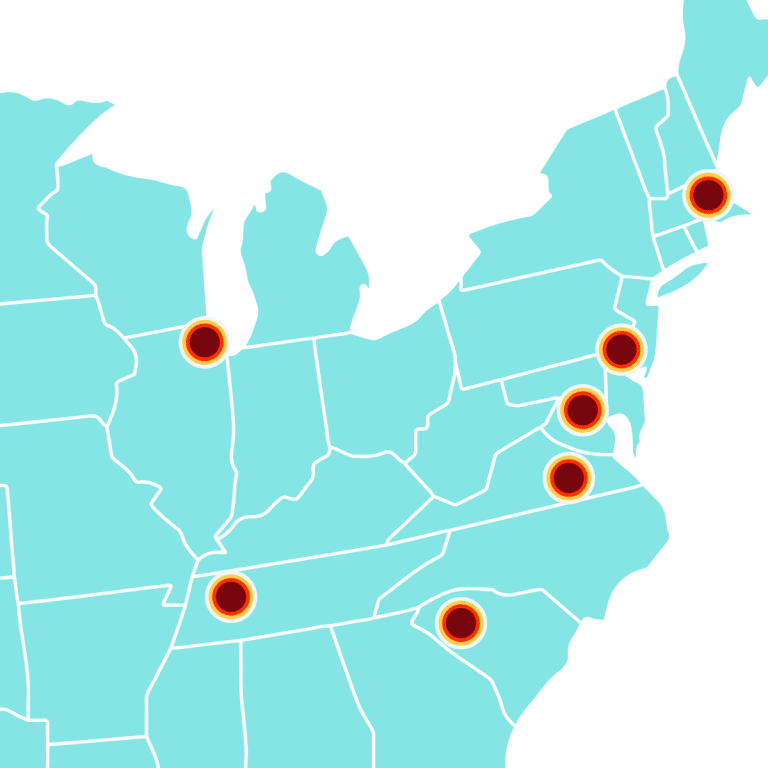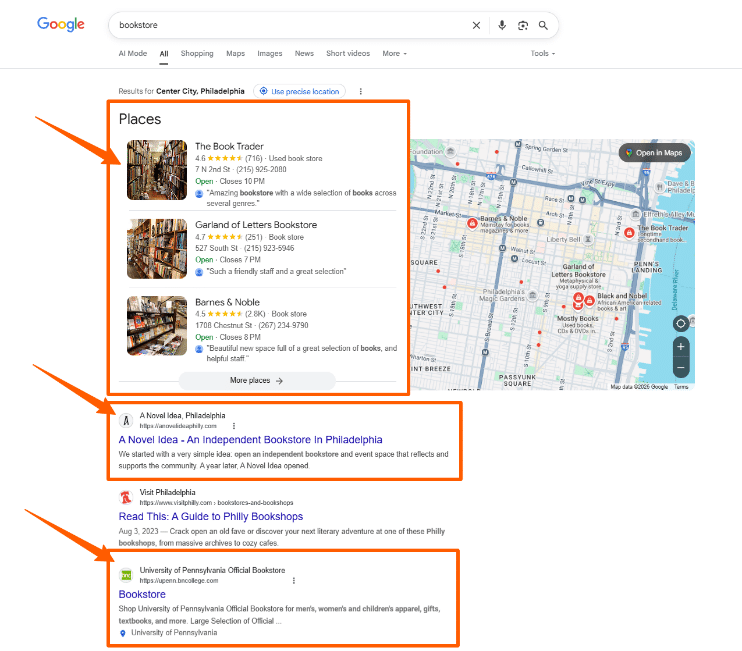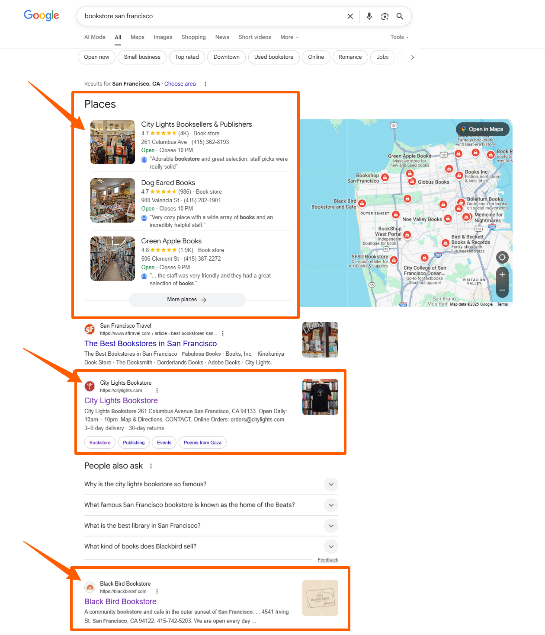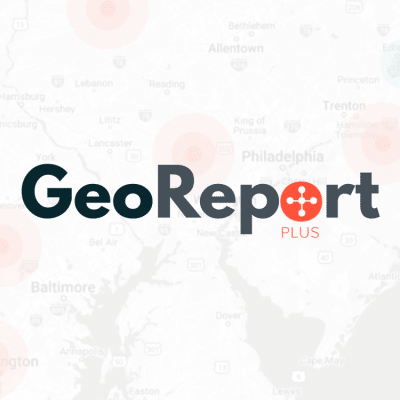Let’s face it – one-size fits all doesn’t really work. Especially in today’s hyper-competitive digital marketing landscape.
You need something to set you apart from your competition. And if you’re like most businesses – regardless of size – your audience is located somewhere.
Using regional marketing, we can align our marketing efforts with specific geographic regions to create more targeted, more effective marketing that leads to better results.
What is Regional Marketing, anyway?
Regional Marketing represents a strategic shift away from broad, national campaigns to a highly targeted approach – concentrating efforts on specific geographic areas like counties, states, or metropolitan regions.
It acknowledges that consumer behavior and purchasing habits vary significantly based on location, demanding tailored messaging, product offerings, and promotional activities.
This data-driven strategy maximizes ROI by understanding and responding directly to the unique characteristics and needs of a particular region
We’ll show you how to pinpoint your regions (or areas) of focus – and how to create a locally-focused marketing campaign to drive real growth.
Identify Your Top Opportunity Regions
Start by identifying your key regions.
Often times, this will be based on opportunity. Opportunity can be identified using several different data points:
- Sales data. Where is your company getting the most amount of sales? The least amount of sales?
- Customer data. Where are your customers located? What gaps exist?
- Web data. Where are your website visitors located? What gaps exist?
Notice a pattern in the questions above? Opportunity isn’t just about looking at where you’re succeeding – it’s about identifying areas of improvement. Focus on areas where you see growth and improvement opportunity instead of where you might already be seeing success.
As we tell our clients all the time: it may be easier to go from a “D” to a “B” then it is an “A” to an “A+”.
It’s also important to stay focused when identifying opportunity regions. Don’t stretch yourself thin in your efforts. Focus on priority opportunities. Narrowing your focus into a select number of high-priority areas often yields better results than attempting to address too many regions at once.
This approach also allows you to test along the way. What worked (or didn’t work) in those efforts? What can we do differently to be more successful elsewhere?

Size Up the Local Competition
We’ve selected our high-priority regions: now what?
It starts by identifying your local competitors – and to do that, you’ll need some pretty *ahem* cool tools. At FourFront, we use our proprietary keyword crawler, dubbed CR1, to check SERPs from anywhere across the globe. This allows us to properly identify top-performing local competitors in any region from the very beginning of the process.
There are other tools that can help you as well. SERP emulators allow you to view local search results, and other web crawlers may have built-in local SERP capabilities. And if you’re really strapped, you can try appending various locations to your keywords like “bookstore san francisco” instead of “bookstore.”


Now that you’ve identified your competitors, it’s time to start learning about them.
How strong is the competition in these regions? What strategies / tactics do they use to attract customers? What content? What keywords? What messaging? What calls-to-action?
These are the key questions you need to answer to better understand how to compete in local regions.
But you’ll hear this from us time and time again: it’s not just about what they’re doing well.

Mimicry is the sincerest form of flattery. And while you can find some successes mimicking your competition, you’re never setting yourself apart.
Analyze what your competitors are doing well but find clear gaps and missed opportunities that they’re not taking advantage of to start setting yourself apart from the rest.
Create Regionally-Tailored Content and Landing Pages
With your identified strategies in hand, it’s time to get to work. This can include building region-specific landing pages with a focus on integrating the strategies you found in your previous search. It might mean region-specific content or keywords in strategic elements, or region-specific imagery.
And don’t forget: we’re building pages that will be valuable to customers in that region. Avoid the pitfall of creating “doorway pages” that are meant to only appear relevant in the eyes of the search engine. Pages should be genuinely helpful to speaking to your customers in each region.
Strengthen Your Messaging with Local Data and Insights
Region-specific content and keywords will only get you so far. We need to connect with customers in these regions.
How do we do that? By enriching our regional content and keywords with region-specific “proof.” Proof can be thought of in two ways:
- Quantitative proof: objective, measurable information relevant to customers in the region. This can include things like locale-specific data, statistics, trends, etc.
- Qualitative proof: personal experience information. This can include things like customer anecdotes, testimonials, news stories, etc. that “prove” our authenticity and connection to a local region.
Integrating these strategies into each page should immediately answer: why does this business matter in the region?
Engage with Your Regional Audiences Across Channels
Updating your website is a great start – but it’s not the only consideration. Consider other ways to reach your audience. And think beyond your traditional channels like social media, email, etc. While important, you can create an even deeper regional connection with region-specific channel mixes.
Create region or locale-specific business profiles to show your physical connection to the region. Engage in region-specific forums. Create “boots on the ground” strategies by participating in local events or partnerships.
Like any good marketing strategy: find where your audience is engaging and meet them there.
Additional tips for your regional marketing mix:
- Be mindful of your channel. Ensure you’re adapting your communications, whether it’s content, imagery, or otherwise, to the channel. Some channels require a different voice or interaction with your brand than others. Platforms like social media mean a more “authentic,” personal voice than one you might share on a platform like LinkedIn.
- Have a unique voice – but stay true to your brand. It’s OK to have a unique voice in various regions. The customer experience is going to differ across regions – and that’s OK! Use an authentic voice that’s reflective of your customer experience in that region. But stay true to your brand. This isn’t about creating a false experience or voice.
Measure Your Results
A strong regional marketing strategy is only as good as its results. So at the risk of stating the obvious: measure your results.
Establish clear KPIs for your regional marketing strategies. Some potential KPIs:
- Search rankings. Where do you rank for target keywords in key regions?
- Website traffic. Are you getting web traffic to your website from key areas? How many in / out-of-region web visitors are coming to your website?
- Store visits / foot traffic. Are you getting more customers in your doors?
Define your KPIs, and set clear goals for what you consider success.
About GeoReport+

If you’re using website traffic as a KPI, we want to make a quick introduction.
At FourFront, we’ve developed an award-winning Google Analytics geographic data tool dubbed GeoReport+ that categorizes website traffic as “in region” or “out of region” to help better understand your Google Analytics data.
It goes beyond saying “you got XX amount of users from a specific city.” GeoReport+ categorizes your website traffic using geospatial calculations to say whether a user was located within a specific radius of your storefront, campus, or other strategically important location. This helps you manage your channels and campaigns to make smarter, data-driven decisions for your regional marketing campaigns.
Check Out Some Examples
We’ve integrated regional marketing as a key strategy across our clients – and with great success. Some of these include:
- Creating specific landing pages to attract users from key areas
- Using geographic data to create targeted Paid Ads campaigns
- Analyzing region-specific rankings and supplementing organic visibility with Paid Ads
FourFront Can Help with Your Regional Marketing Efforts
We understand the impact regional marketing can have on your business. That’s why it’s become a key component of our clients’ strategies – and an award-winning part of our proprietary technologies.
Our regional marketing strategies are “baked into” our client strategies from day one, whether you’re focused on organic visibility or paid advertising.
We also offer a la carte insights, as well. Using our proprietary technologies, we provide insightful (and more importantly, actionable) reports like our Regional Visibility Report and Regional Search Volume Analysis to provide your team with the data you need for a successful regional marketing campaign.
Interested? Let’s talk.
FAQs
What is regional marketing?
Regional marketing is a marketing strategy that focuses on the needs, preferences, and characteristics of a specific geographic area (or region).
A regional marketing strategy can use regionally-adjusted content, messaging, products, promotions, channels, and more to better connect with local audience(s).
Why is regional marketing important?
Regional marketing is important because it helps businesses more effectively connect with customers in a specific region.
What’s the difference between regional marketing and local SEO?
Though similar, regional marketing and local SEO are different and serve different purposes. Regional marketing focuses on broader geographic areas or regions and works across channels, while local SEO focuses on more specific geographic targets and uses SEO as its primary channel.
Do I really need a separate landing page for each region?
Not necessarily – but it can be beneficial!
Regional marketing means tailoring your content, imagery, and other marketing materials for the target region. This typically means creating dedicated landing pages on your website – but not always. Always do your research for the best results!
Is regional marketing only for bigger brands?
No! Regional marketing is effective for brands of all sizes.
While larger brands or businesses with many locations may have more regional marketing strategies, regional marketing is for small businesses too. Think about it – even if you only have one location, you want a regional marketing strategy to be effective in your one location.
What are the most effective channels for reaching regional audiences?
It depends! The most effective channels for reaching regional audiences can differ depending on the region.
Typically, SEO and Paid Ads are effective channels – but additional channels like social media, email marketing, influencer marketing, traditional media, etc. can all be adapted with regional marketing tactics.









